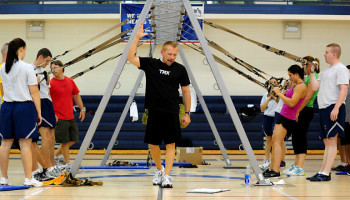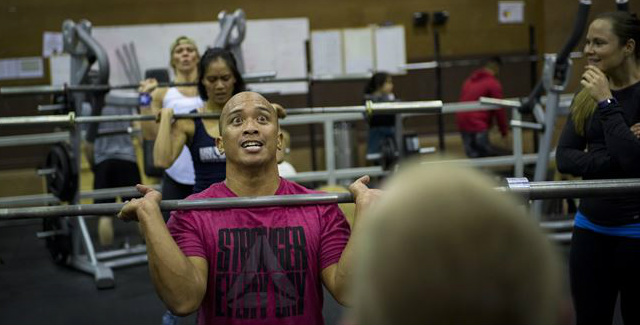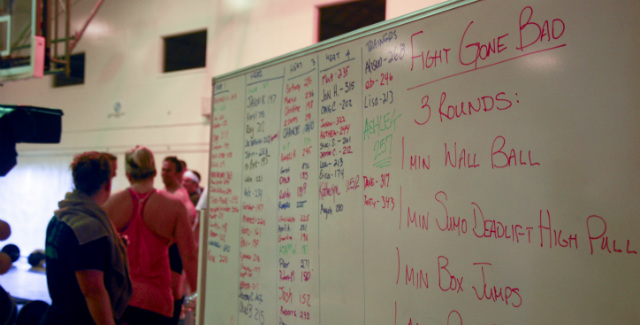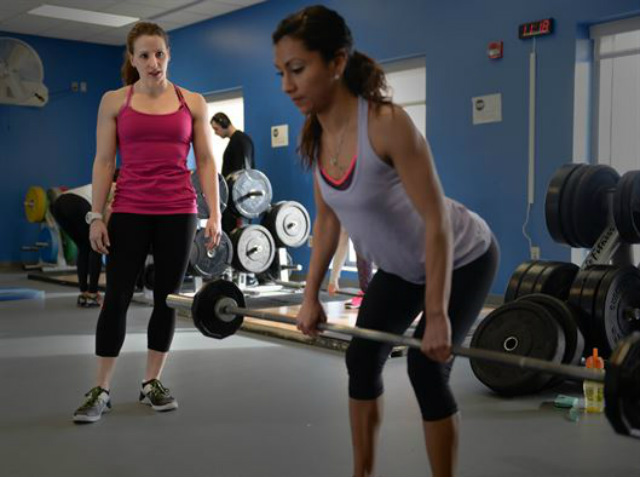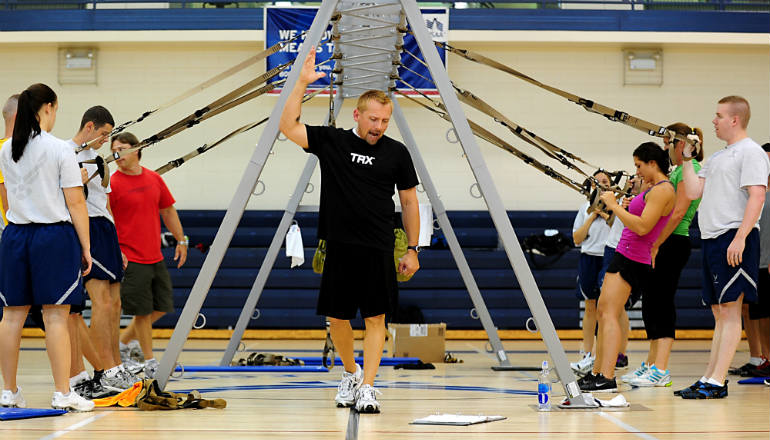 Reading Time: 7 minutes
Reading Time: 7 minutesSix hundred calories torched and 28 of my hard-earned dollars burned along with them, I walked out of a group training session, drenched in sweat and puzzled as to how after a full hour, the only feedback I received from the coach was, “Nice work.”
Granted, we met at 6:00am, I was a drop-in, and she was a substitute. We were never going to be a thing. She demonstrated proper form and kept a close eye on the interval timer. I sprinted and squatted to my heart’s content.
There was no injury to me or my ego by the time the last buzzer rang. In fact, I felt accomplished. But would this investment ultimately be a wise path toward my fitness and financial goals?
Group training businesses are blossoming everywhere you turn, taking over storefronts, warehouses, suburban basements, backyards, and parks. Gym chains are following suit, bridging the gap between their group fitness and personal training services with group training offerings to rival the fitness boutiques popping up in their neighborhoods.
The business model is genius. Group training drastically cuts costs for clients in comparison to one-on-one personal training. You gain increased accountability, a social network, and some healthy competition on the fitness floor. For business owners, their coaches make more money per hour in these formats, with more participants paying toward the bottom line.
The question becomes, though, when do the downsides of group training outweigh all the perks? Let’s look at five critical factors that should play a part in deciding if a group training situation is right for you.
1. Student-to-Instructor Ratio
As a trainee, the breaking point for your investment in group training likely lies in the number of students relative to the number of coaches present in your session. When strength training is involved, if there are more than ten students per instructor, the quality of coaching inarguably diminishes. If your group is chock full of avid beginners, I would cut this number down to four participants before you have maxed out most coaches’ ability to instruct and adjust form.
From the coach’s standpoint, the swamped group training session quickly becomes an effort to triage injury prevention, movement patterning, and athlete performance. The more acts you throw into the circus, the harder it is to keep an eye on them all. The coach will have to give something up and/or surrender to becoming a group cheerleader.
While it must be awesome for a business to pull in $600 an hour for a 30:1 instructor-to-student ratio, as the client, you may be able to take your $20 up the street and get a lot more of a coach’s observations in the same time constraint.
You may argue that these plush group training facilities are sparkling clean with the best gym equipment and the other participants provide the motivation you need. But in the end, form adjustments and intensity recommendations from a devoted coach are critical to achieving your goals and keeping you safe.
2. Immediate Feedback
Providing live feedback to the consumer is an area in which many new group training businesses excel. For example, the popularization of heart monitoring technology, allows many of these businesses to stream information as to what heart rate zone you are training in. When executed well, these businesses are educating their members as to what zones they are looking for, and the members learn to monitor and gauge the intensity of their activity to match their goals.
For group training that is more strength-based, tracking of how much weight you are lifting for how many sets and reps provides critical intel for increasing your fitness level over time. Resistance-based group training should include recommendations for tracking your workouts, whether it be writing your scores on a board that is photographed or the old-school method of creating a workout notebook. Having a reference of your personal bests, will help you select weights for future workouts, and provide motivation for milestones.
3. Coaching to Your Fitness Level
There will come a time in every training group, be it the first day or years into it, where you look around and notice you are out of your league. It could be you are the only person in the group who wishes there were heavier kettlebells available or you are the only person in your group lowering the intensity of every suggested exercise.
Before you plop down your savings on a long-term commitment to group training, find out who the group is geared toward, if there are different level groups at different times, and whether the programming can be tailored to your goals, needs, and exercise history.
Letting your coach know your training goals and previous injuries should be part of the enrollment process for group training. Whether you have lingering low back pain or are looking to improve your speed for an upcoming race, what you present as a goal or limitation should be considered within the programming you are given.
Once class gets going, if there are no modifications offered and likewise no suggestions made for increasing intensity, stop the coach after class and ask for recommendations to keep seeing results from your investment. If you’re never asked for information about yourself, consider it a red flag to take your business elsewhere.
4. Measured Results
Though the benefits of exercise can be abstractly measured in post-workout smiles and endorphins, if you’re paying for coaching, there should be tangible results.
Seek out group training that offers an initial assessment of your health and performance. Reassessments should come in some shape or form every three months. If the training staff is not testing you, here are some simple ways you can test yourself based on your goals:
- Leaning out: Wash your favorite pair of jeans and try them on before you start a new group training program. Repeat as often as desired.
- Strength: Five-repetition max testing for major lifts such as squats and bench press can set nice benchmarks of your improvement over time.
- Muscular endurance: Conduct a two-minute push-up test or air squat test.
- Cardiovascular endurance: Time yourself on a 1.5-mile run or walk, or test your time on a 1000m row or 3-mile flat bike ride.
- Core strength: Time how long you can hold a plank with good form.
- Mobility/form improvement: Film yourself doing bodyweight squats, lunges, pull-ups, and push-ups, then compare after three months to note areas of improvement and areas that still need work.
5. The Coach(es)
There are dozens of degrees, certifications, and experience levels pooled in the fitness industry over which you could argue for hours as to what makes the best resume. When it comes to group training, though it’s important for your coach to be nationally certified, it really boils down to looking for the coach who cares.
What does caring look like in fitness?
Think of your coach like an airline pilot. Would you want your airline pilot to be hungover, on four hours sleep, taking selfies and eating snacks in the cockpit as he or she navigates your successful landing? Hell no.
A group training coach should provide the class with his or her alert and undivided attention. Ultimately, you are paying for the coach’s time and expertise, not the dumbbells. Coaches should make a valiant effort to provide cues and encouragement to all participants regardless of level.
If you aren’t getting enough information from a coach, take some ownership, be the ultimate form of coachable and ask for more direction. If you still aren’t getting what you need, consider looking for a new facility or different instructor.
How to Keep the Group Training Effect Going
Once you’ve found the group training that suits you, commit to three days a week at a minimum in order to see improvement. Remind yourself of your original standards for your investment every time you re-enroll. Ask yourself if you are still seeing tangible results and receiving the attention you are paying for.
Over time, you may find you risen above the group and it’s time to move on to fitter pastures. There will likely be a new group training business around the corner waiting for you — but don’t forget the five critical factors above, as using them to discern what’s right for you will serve you once again.
